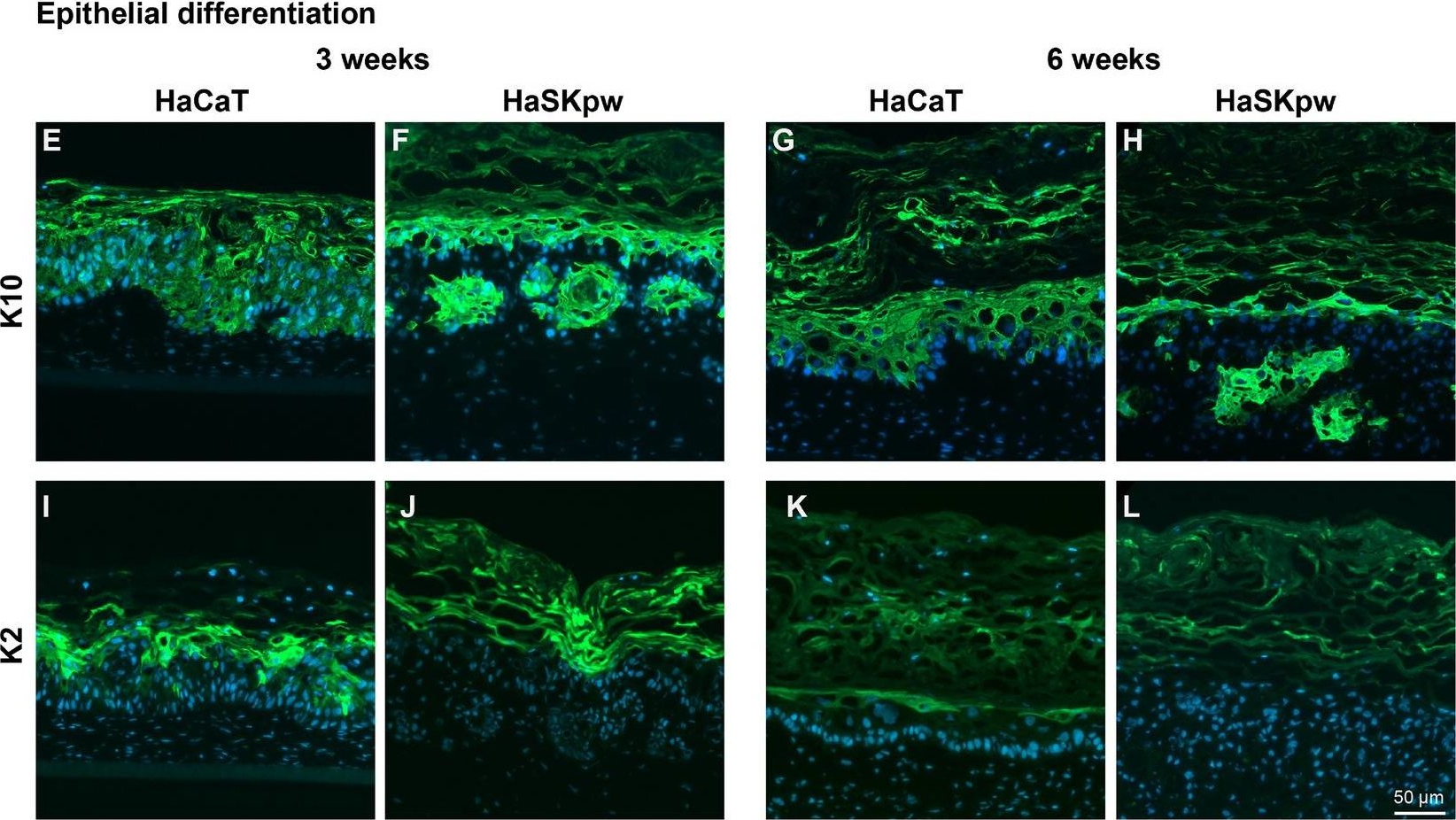anti-Keratin K2 mouse monoclonal, Ks2.342.7.4, supernatant
- Mouse monoclonal
- Suitable for ICC/IF and IHC
- Reacts with bovine and human
- Isotype: IgG1
Product description
| Quantity | 1 ml |
|---|---|
| Antibody Type | Monoclonal |
| Host | Mouse |
| Isotype | IgG1 |
| Conjugate | Unconjugated |
| Application | ICC/IF, IHC, WB |
| Purification | Hybridoma cell culture supernatant |
| Reactivity | Bovine, Human |
| Storage | Short term at 2-8°C; long term storage in aliquots at -20°C; avoid freeze/thaw cycles |
| Intended use | Research use only |
| Clone | Ks2.342.7.4 |
| Immunogen | Synthetic peptide (N-terminal amino acids nos. 2-23) of human keratin K2 (MW 65,852) |
| Formulation | Contains 0.09% sodium azide |
| Stability | Bovine: calf hoof epidermis, snooze epithelium; negative with tongue epithelium; Mouse/rat: heterogenously on foot sole epidermis only, negative with epidermis of other body sites. |
| UniprotID | G3MZ71 (Bovine), P35908 (Human) |
| Synonym | Keratin, type II cytoskeletal 2 epidermal, Cytokeratin-2e, CK-2e, Epithelial keratin-2e, Keratin-2 epidermis, Keratin-2e, K2e, Type-II keratin Kb2, KRT2, KRT2A, KRT2E |
| Note | Centrifuge prior to opening |
Applications
| Tested applications | Tested dilutions |
|---|---|
| Immunocytochemistry (ICC)/ Immunofluorescence (IF) | 1:200 |
| Immunohistochemistry (IHC) - frozen | 1:100-1:250 (pretreatment with Triton-X100 recommended) |
| Immunohistochemistry (IHC) - paraffin | 1:250-1:500 (microwave treatment recommended) |
Background
Ks 2.342.7.4 represents an excellent marker to study terminal epidermal differentiation. The mab is reactive with epidermal cells in uppermost suprabasal layers including scalp, foot and sole. It recognizes individual cells within epidermis of tongue and mamille (co-localization with keratin K10). It is also reactive on hyperkeratosis of diverse viral and genetic origin. The mab does not react with palate keratin K76.
The actual clone designation of this antibody is Ks2.342.7.4. The two last digits refer to the passage number of the cultured cells of clone Ks2.342. Passage 7.1 is used up.
Reactive polypeptide (specificity): basic human keratin K2 (MW 65,852; formerly also designated cytokeratin 2e).
Antigen recognized in species:
- Bovine: calf hoof epidermis, snooze epithelium; negative with tongue epithelium
- Mouse/rat: heterogenously on foot sole epidermis only, negative with epidermis of other body sites
References/Publications (1)
Downloads
Q & A's
Customer Reviews
Login
FAQs
The concentration of purified antibodies is mentioned on the datasheet.
For prediluted antibodies the concentration may vary from lot to lot. The concentration of these antibodies is not mentioned on the datasheet and can be requested at support@progen.com.
The supernatant format contains FCS proteins from cell culture medium supplemented with FCS.
The serum antibodies contain other proteins present in serum.
- Supernatant and supernatant concentrate: This format contains hybridoma cell culture supernatant. The antibody is not purified and the antibody concentration is not determined. The antibody concentration may vary from lot to lot. Therefore we recommend to titrate the optimal concentration for the application used for each new lot.
- Lyophilized, purified: This format contains purified antibody in lyophilized form. The reconstitution of this antibody is described in the datasheet. The buffer composition after reconstitution is also mentioned on the datasheet.
- Liquid, purified: This format contains purified antibody in liquid format. The concentration is mentioned on the datasheet.
- Prediluted, purified: This format contains purified antibody in liquid format. Most antibodies in this format are diluted to be ready-to-use for IHC with standard tissue. But some antibodies of this format need further dilution for IHC. This is mentioned on the datasheet.
Most of our liquid antibodies and reconstituted lyophilized antibodies may be stored for short term storage (up to 3 month) at 2-8°C. For long term storage we recommend to store the antibody at -20°C in aliquots. Please avoid freeze and thaw cycles.
Most of our conjugated antibodies should be stored at 2-8°C.
The individual storage conditions are mentioned on the datasheet.






















